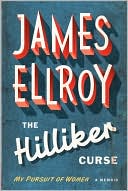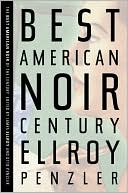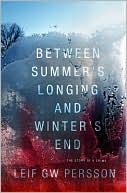The year was 1958. Jean Hilliker had divorced her hustler husband and resurrected her maiden name. Her son, James, was 10 years old. He hated and lusted after his mother and “summoned her dead.” She was murdered three months later. The Hilliker Curse is a treatise on guilt and on the power of malediction. James Ellroy unsparingly describes his shattered childhood, his delinquent teens, his writing life, his love affairs and marriages, his nervous breakdown, and the beginning of a relationship with an extraordinary woman. It may be unlike any memoir you have ever read, which is not surprising given the author’s previous work.
Ellroy is back on familiar ground with his introduction to the The Best American Noir of the Century. “Noir,’ he writes, “is the most scrutinized offshoot of the hard-boiled school of fiction. It’s the long drop off the short pier and the wrong man and the wrong woman in perfect misalliance. It’s the nightmare of flawed souls with big dreams and the precise how and why of the all-time sure thing that goes bad.” Ellroy and Otto Penzler, series editor of the annual Best American Mystery Stories, mined a hundred years of writing—1910–2010—to find this treasure trove of 39 stories, and present here gems like James M. Cain’s “Pastorale” as well as works by giants like Mickey Spillane, Evan Hunter, Elmore Leonard, Patricia Highsmith, Joyce Carol Oates, Dennis Lehane and William Gay.
Penzler is back with a thrilling collection of the year’s best reportage by the aces of the true-crime genre. The Best American Crime Reporting 2010 brings together the mysteries and missteps of an eclectic and unforgettable set of criminals. Gripping, suspenseful, and brilliant, this latest addition to the highly acclaimed series features guest editor Stephen J. Dubner, award-winning co-author of SuperFreakonomics and Freakonomics.
If the following sounds familiar, it is.
The first novel in a dark and dazzlng trilogy that has become the defining fictional account of the unsolved 1986 assassination of Swedish Prime Minister Olof Palme—an event that triggered the biggest criminal investigation in recorded history—Between Summer’s Longing and Winter’s End is a riveting insider’s combination of black satire, thriller, psychological drama, and police procedural by a writer universally acknowledged as Sweden’s leading criminologist. A young man falls to his death from a window in a student dorm in Stockholm, his loose shoe striking and killing the little dog being taken for his evening walk by an old man. It seems to be a mundane suicide—at least that’s what the police choose to think. But the young man is American, not Swedish, and there are a couple of odd things about his room when they search it. From these beginnings, Leif GW Persson slowly unravels a puzzle that gets larger and larger as it becomes more and more complex, until it sweeps us into a web of international espionage, backroom politics, greed, sheer incompetence, and the shoddy work of Sweden’s intelligence force that leads to the murder of the prime minister.
The resemblance (in setting and publishing strategy) to Steig Larsson’s Millenium Trilogy, starting with The Girl with the Dragon Tattoo, is clearly intentional. Between Summer’s Longing and Winter’s End was first published in Sweden in 2002, and the success of Larsson’s books will surely attract readers to this new series.


